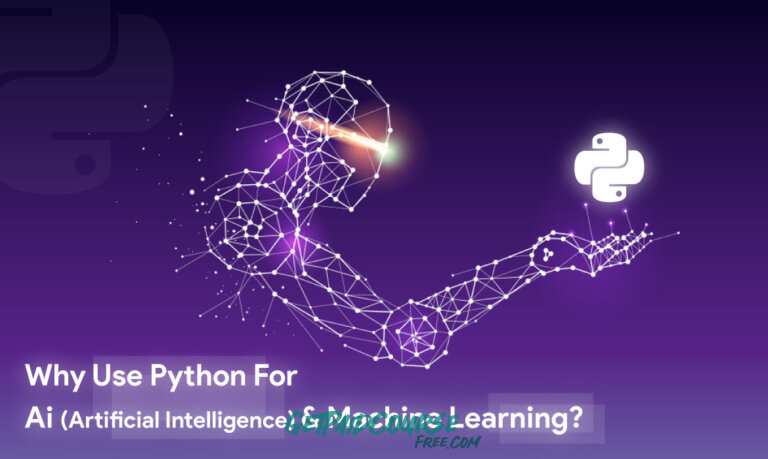Machine Learning A-Z™: Python & R in Data Science [2023]
Machine Learning A-Z™: Python & R in Data Science [2023]
Learn to create Machine Learning Algorithms in Python and R from two Data Science experts. Code templates included.
How To Download Course With Smartphone
What you’ll learn
- Master Machine Learning on Python & R
- Have a great intuition of many Machine Learning models
- Make accurate predictions
- Make powerful analysis
- Make robust Machine Learning models
- Create strong added value to your business
- Use Machine Learning for personal purpose
- Handle specific topics like Reinforcement Learning, NLP and Deep Learning
- Handle advanced techniques like Dimensionality Reduction
- Know which Machine Learning model to choose for each type of problem
- Build an army of powerful Machine Learning models and know how to combine them to solve any problem
![Machine Learning A-Z™: Python & R in Data Science [2023]](https://getpaidcoursefree.com/wp-content/uploads/2023/02/Screenshot-2021-12-12-at-6.37.32-PM-1024x432.png)
Requirements
- Just some high school mathematics level.
Description
Interested in the field of Machine Learning? Then this course is for you!
This course has been designed by a Data Scientist and a Machine Learning expert so that we can share our knowledge and help you learn complex theory, algorithms, and coding libraries in a simple way.
Over 900,000 students world-wide trust this course.
We will walk you step-by-step into the World of Machine Learning. With every tutorial, you will develop new skills and improve your understanding of this challenging yet lucrative sub-field of Data Science.
This course can be completed by either doing either the Python tutorials, or R tutorials, or both – Python & R. Pick the programming language that you need for your career.
This course is fun and exciting, and at the same time, we dive deep into Machine Learning. It is structured the following way:
- Part 1 – Data Preprocessing
- Part 2 – Regression: Simple Linear Regression, Multiple Linear Regression, Polynomial Regression, SVR, Decision Tree Regression, Random Forest Regression
- Part 3 – Classification: Logistic Regression, K-NN, SVM, Kernel SVM, Naive Bayes, Decision Tree Classification, Random Forest Classification
- Part 4 – Clustering: K-Means, Hierarchical Clustering
- Part 5 – Association Rule Learning: Apriori, Eclat
- Part 6 – Reinforcement Learning: Upper Confidence Bound, Thompson Sampling
- Part 7 – Natural Language Processing: Bag-of-words model and algorithms for NLP
- Part 8 – Deep Learning: Artificial Neural Networks, Convolutional Neural Networks
- Part 9 – Dimensionality Reduction: PCA, LDA, Kernel PCA
- Part 10 – Model Selection & Boosting: k-fold Cross Validation, Parameter Tuning, Grid Search, XGBoost
Each section inside each part is independent. So you can either take the whole course from start to finish or you can jump right into any specific section and learn what you need for your career right now. You Can Learn More Master Blogging & Sales Copywriting With Chat GPT-Enroll Now
Moreover, the course is packed with practical exercises that are based on real-life case studies. So not only will you learn the theory, but you will also get lots of hands-on practice building your own models.
And as a bonus, this course includes both Python and R code templates which you can download and use on your own projects. You Can Learn More Udemy – PyTorch Deep Learning and Artificial Intelligence
Who this course is for:
- Anyone interested in Machine Learning.
- Students who have at least high school knowledge in math and who want to start learning Machine Learning.
- Any intermediate level people who know the basics of machine learning, including the classical algorithms like linear regression or logistic regression, but who want to learn more about it and explore all the different fields of Machine Learning.
- Any people who are not that comfortable with coding but who are interested in Machine Learning and want to apply it easily on datasets.
- Any students in college who want to start a career in Data Science.
- Any data analysts who want to level up in Machine Learning.
- Any people who are not satisfied with their job and who want to become a Data Scientist.
- Any people who want to create added value to their business by using powerful Machine Learning tools.
if Download any problem or need any course join the group and tell your problem on Facebook & Telegram Or Comment on Us
How to Download Our Course With Desktop

![Machine Learning A-Z™: Python & R in Data Science [2023]](https://www.getpaidcoursefree.com/wp-content/uploads/2023/02/Machine-Learning-A-Z-Python-R-in-Data-Science-2023.jpg)








Love it
This course is designed to help you learn how to create, train, and use Machine Learning models. You will learn how to use Python and R to create Machine Learning models, and then you will use those models to make accurate predictions, make robust analysis, and make powerful decisions for your business.
Brada
Part 1: Data Preprocessing
In this part, we will learn how to process data and how to make better predictions. We will learn about common data preprocessing techniques, such as cleaning data, removing outliers, and restructuring data.
Part 2: Regression: Simple Linear Regression, Multiple Linear Regression, Polynomial Regression, SVR, Decision Tree Regression, Random Forest Regression
In this part, we will learn how to regression models. We will learn how to use a simple linear regression model, a multiple linear regression model, a polynomial regression model, and a SVR model.
Part 3: Classification: Logistic Regression, K-NN, SVM